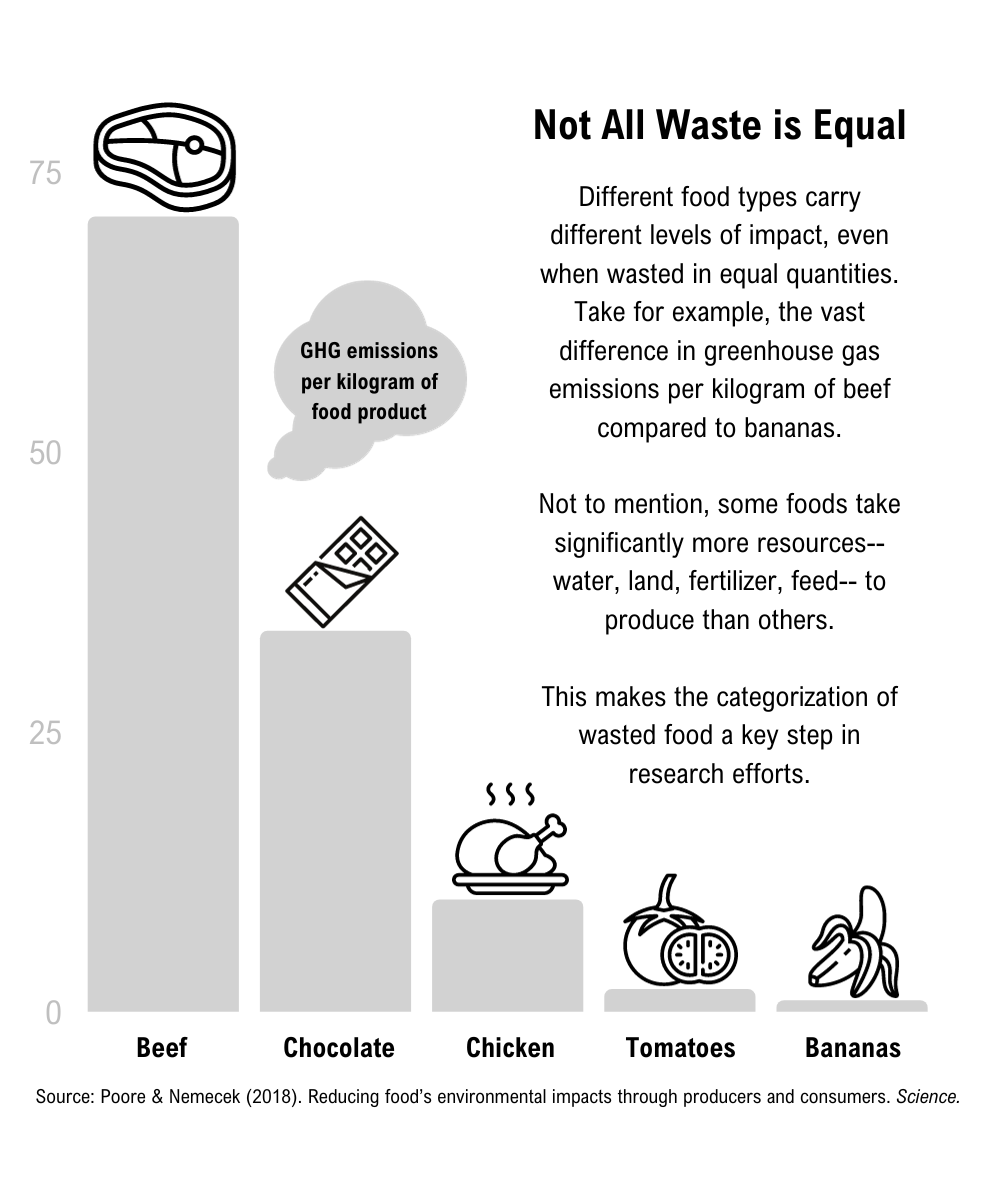Food Waste:
Overview & Solutions
Exploring Impacts of Food Waste
Food waste is a far-reaching problem with consequences on both the national and global scales.
As a major contributor to economic outcomes, environmental strain, and even food insecurity, the loss and misuse of food resources costs billions of dollars each year. Yet because of its impact, initiatives to reduce and repurpose this waste have the potential to bring about extensive change.
Economic Impact
In 2021, food waste cost the U.S. an estimated $310 billion—equivalent to nearly six million years of Harvard tuition at current rates. The majority of this toll falls on consumers, with the average family of four spending approximately $1,500 annually on wasted food. With over 10% of Americans at or below the poverty line in the same year, money lost to food waste can be a significant chunk of a family’s income.
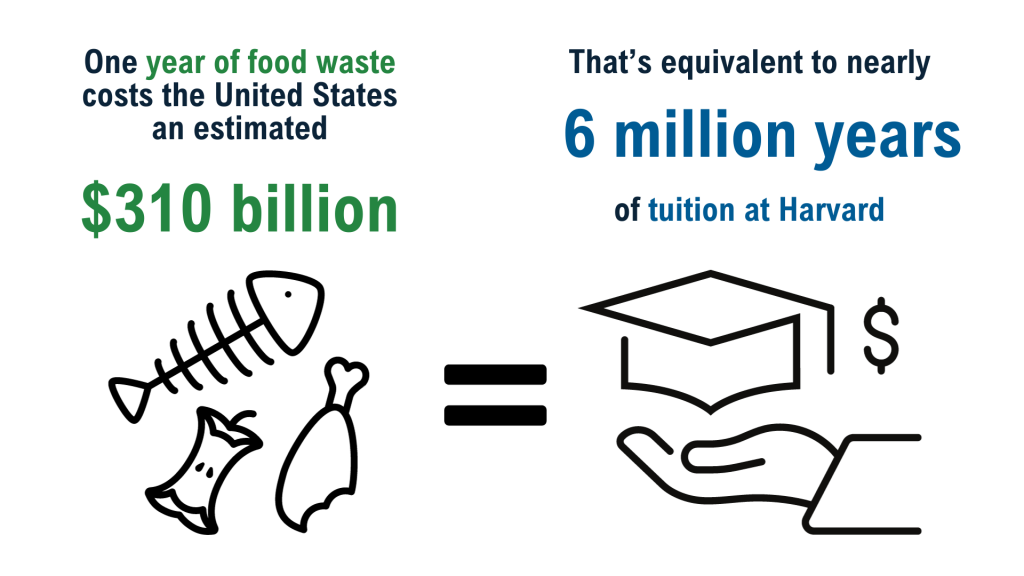

FOOD SECURITY IMPACT
Food insecurity affected 13.5 million U.S. households in 2021, and disproportionally impacts families with children. The phrase “food waste” may conjure images of moldy leftovers and slimy spinach fermenting in a refrigerator drawer, but the reality is that much of our nation’s food waste consists of safe and edible food. Globally, we waste enough food to feed the world’s entire undernourished population twice over. By reducing our waste, we can work towards a future where our abundance of food is distributed to those who need it.
ENVIRONMENTAL IMPACT
The production of food which ultimately goes uneaten wastes freshwater, emits gasses, and causes organic waste to pile up in our landfills. As it decomposes, wasted food releases harmful gases that build up in the atmosphere and can interfere with worldwide weather patterns, with consequences ranging from small lifestyle disruptions to cataclysmic natural disasters. These gases also contribute to the warming of our planet, making their reduction a vital part of the mission to steward our world for future generations.
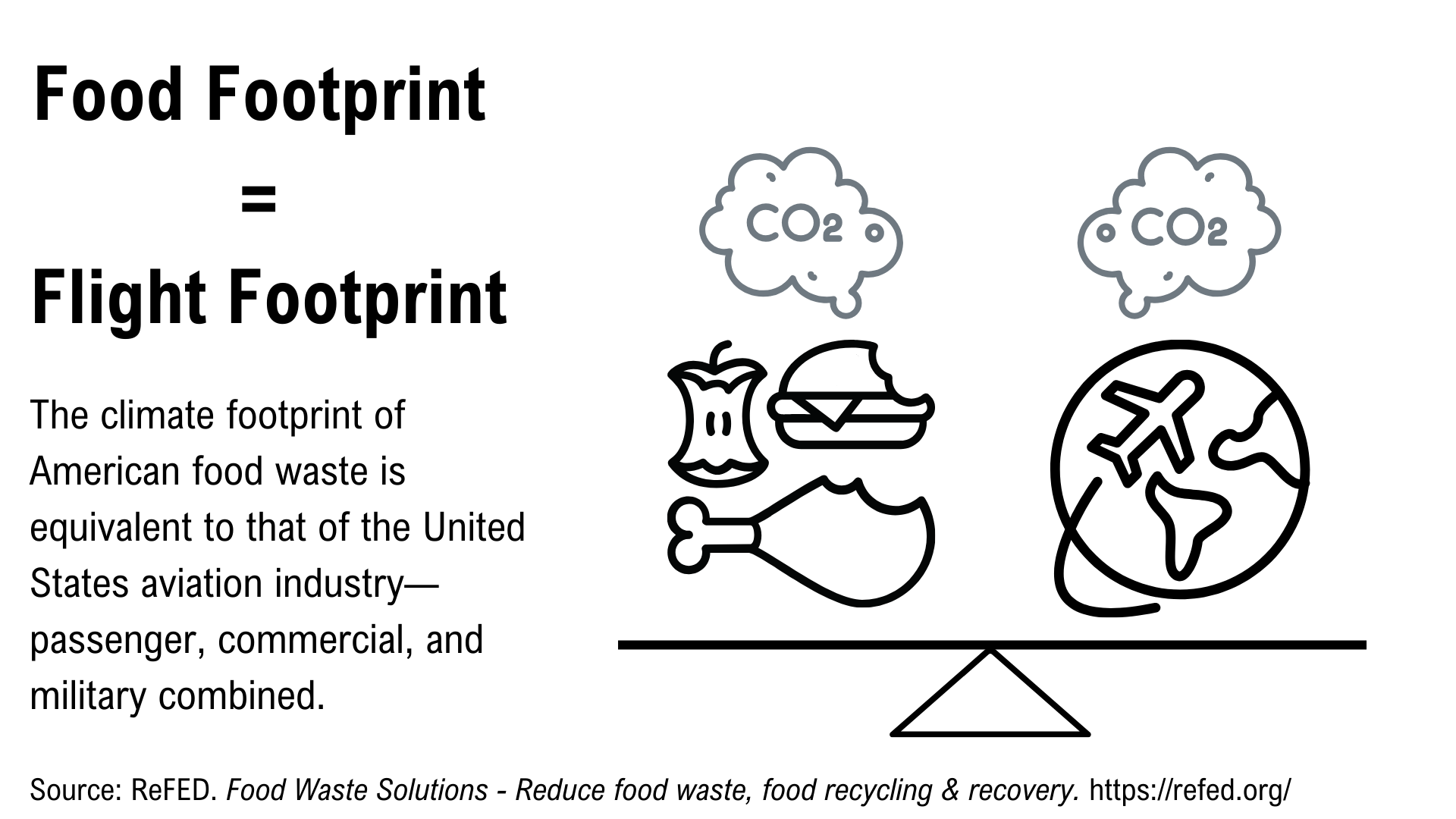
So Where’s the Waste?
Our food makes a long journey from fields and pastures to our tables and landfills, with waste occurring every step of the way—from going unharvested on farms, to being rejected by grocery stores for imperfections, to spoiling on buffet lines, to shriveling in the refrigerator. The following is a breakdown of the major points of waste along that path and the percentage of the food surplus problem they represented in 2021. Nearly half of waste occurs in the home, making household waste a crucial facet to better understand and reduce.
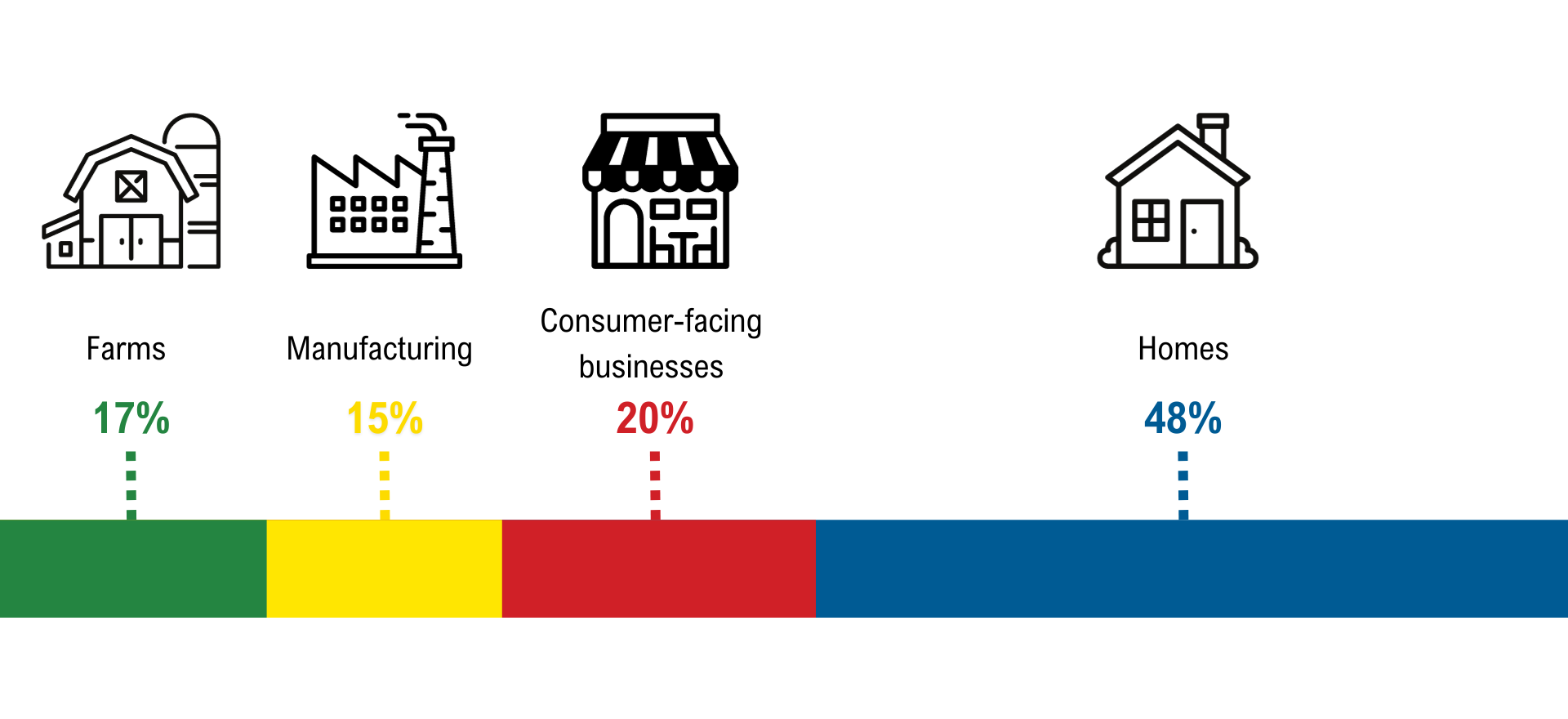
When Abundance Becomes Excess
For many households, holidays are a time for enjoying good food in good company. Serving platters are heaped with a variety of options, and we pile our plates with the plentiful spread. While there’s nothing wrong with enjoying an indulgent meal as part of your holiday celebration, keep these things in mind as you host or attend food-filled festivities:
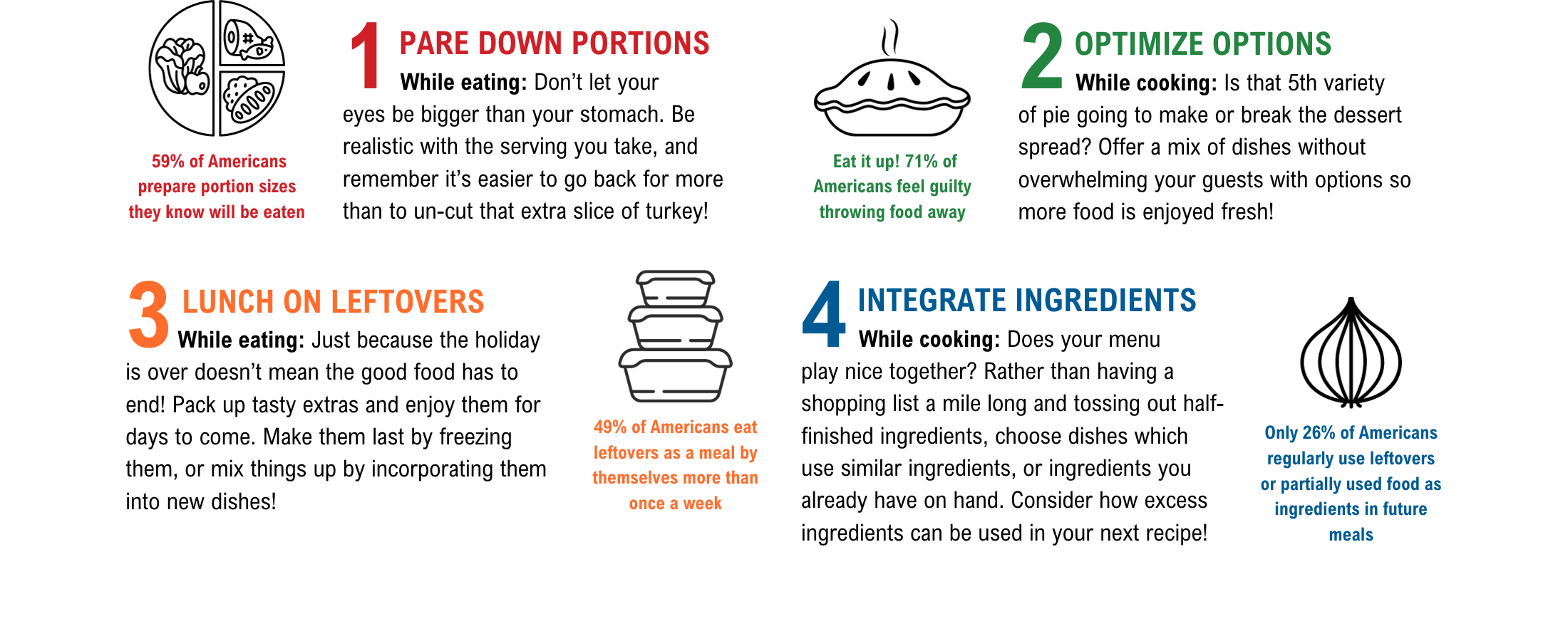
Is “Best Buy” the
Best Measure?
Did you know date labels can indicate the safety OR quality of food, and are only federally regulated on infant formula? The language on date labels is unstandardized and misinterpreted by many, resulting in prematurely discarded food. Rather than relying on the printed date alone, trust your senses when deciding if something is safe to buy or eat!
MEASUREMENT CHALLENGES
Many countries, including the U.S., have pledged to reduce food waste by 50% at the retail (e.g., grocery stores, restaurants) and consumer (e.g., individuals, households) levels by 2030. To realize this ambition, leading food waste experts recommend a simple but effective “Target-Measure-Act” approach:
1. Target or set goals to motivate action
2. Measure food waste to track progress toward goals
3. Act to reduce food waste
MITRE and Gallup conducted this nationally representative survey of 9,259 American households to better understand the state of food waste in America and raise awareness about factors that can help reduce it. This is the largest known representative study of food waste in the U.S. Gathering representative data on the issue allows us to quantify a household food waste baseline and to better understand how different groups of Americans engage with food waste, making it vital to the quest of food waste reduction.
